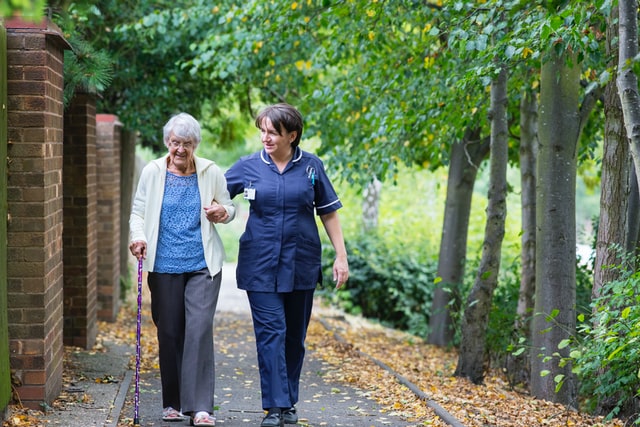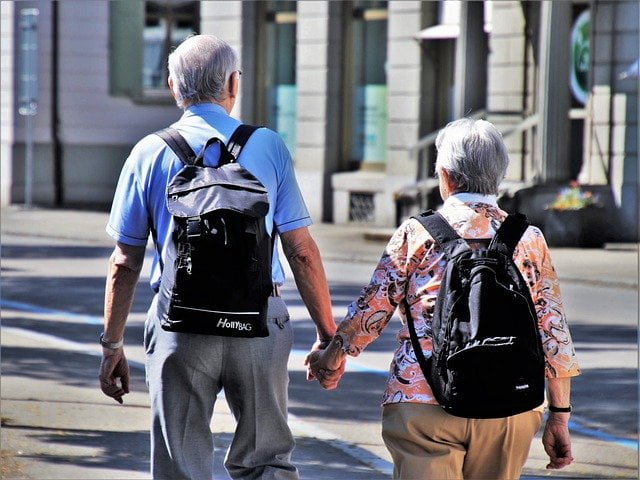How To Help Your Elderly Relative With Diabetes To Stay Fit And Healthy

Notice The Signs
Older people with diabetes are at a much higher risk of hypoglycemia (often referred to as a ‘hypo’), especially if they are on medication for their diabetes. Hypoglycemia is a condition in which blood sugar levels are lower than normal. If left untreated, it can cause confusion, clumsiness, or fainting and in severe cases can lead to seizures, coma, and even death.
The signs and symptoms of hypoglycemia to look out for include:
- Feeling hungry
- Sweating
- Dizziness
- Tiredness/fatigue
- Blurred vision.
- Trembling or shakiness
- Going pale
- Fast pulse or palpitations
These signs can be less obvious in older people and in some cases they could experience hypoglycemia without showing any symptoms at all. If this is the case, it is important to look out for the more subtle changes in behaviour, such as the inability to concentrate, morning headaches and sleep disturbance. Older people may also have added risk factors which can increase the risk of hypoglycemia. For example if they suffer from chronic kidney problems, they have an unhealthy diet, they have another underlying illness or condition, or as previously mentioned if they are on certain diabetes medication.

Eat A Healthy Diet
Regardless of whether you are diabetic or not, eating a nutrient rich and balanced diet is key to good health. However, people with diabetes need to more aware of this than most, as what they eat has an effect on their glucose levels and so it is important to learn not only the best foods to eat, but also how much to eat and when.
If you are caring for a loved one with diabetes yourself, you are likely in control of what they eat and so it is up to you to ensure they have a diet low in sugar and saturated fats. Remember that the sugar in fruit also counts, so whilst it is healthy it should still be limited. When it potentially gets more difficult is if your parent or loved one is in a care home meaning there is less control over what they eat. Make sure the care home knows about their condition and ask for a sample menu so that you can check it suits their dietary needs.
Most people with type 2 diabetes are able to control their diabetes through diet alone and by making sure they check their blood glucose levels regularly. Sometimes it goes a step beyond this and they may reach a point where they need medication to manage the condition; this is often the case in elderly people. Unfortunately, one of the side effects of taking diabetes medication is that even though it helps to control the condition it can also bring on hypoglycemia (see above).
To prevent this, it is important to have regular mealtimes and to eat high carb snacks. If however, you notice any of the signs of hypoglycemia it is important to make sure they eat 10-20 grams of sugar or carbohydrates (this could be 5 jelly babies, a small glass of pure fruit juice, half a banana or even some glucose tablets) and then retest their blood glucose level after approximately 15 minutes, repeating if the level remains low. If it continues to stay low, seek medical attention immediately.

Exercise Regularly But Safely
The American Diabetes Association recommends exercising 30 minutes a day, at least 5 days a week. It sounds a lot, especially for older people who may be less mobile. But exercise doesn’t necessarily mean high intensity workouts, even going for a walk, doing the gardening, or practising some low intensity Thai chi or yoga all counts towards helping you stay fit and healthy. You could even split this up into 10 minutes of activity 3 times a day to make it more manageable.
Staying active in your senior years helps to maintain mobility, keep muscles strong, supple and flexible, it helps with balance and co-ordination and it also improves insulin sensitivity. Plus let’s not forget the wealth of mental health and wellness benefits that staying active brings as well. It is really important to check with yours or your loved one’s GP before starting any new exercise and remember to take it gentle when you first start.
For diabetics, the best time to exercise is between one to three hours after eating, as this is when blood sugar levels are likely to be higher. You should always test your blood sugar before exercising and then again 30 minutes later to see if the levels are stable. Aerobic exercise such as walking, swimming, and cycling can help to control glucose levels.

As is always be the case, if you are concerned in any way about your loved one’s health you should get in touch with a GP and seek professional medical advice.
*collaborative post
This article was originally published by artofhealthyliving.com. Read the original article here.




